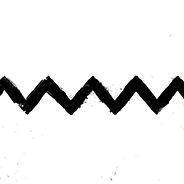Life is Feudal Guide to Heraldry
Contents
Overview
Heraldry comes in several forms, namely Voice, Book and Field.
Voice Heraldry is a matter of protocol whether it is setting the conditions for court to the actual running of the event. Court Heraldry requires one to be well versed in the proper procedure and flow of a noble court.
Book Heraldry is the art of describing or emblazoning heraldic arms that are used to graphically display an icon or logo that are personally representative of an individual, organization or place. Some elements of heraldic arms may be reserved by the Crown, Church or State and restricted by the College of Heraldry that manages that registry. A Kingdom may have a Royal College while a Shire may host their own local college to register local arms.
Field Heraldry deals in the protocol of hosting a tournament or managing the affairs of a military unit in the field.
Voice Heraldry
Court Heraldry
Observing the proper flow of court ensures that business flows smoothly and that the participants don't grow bored and the court runs over time. Pacing is an incredibly important element of ensuring you have the attention of those in attendance. Court will open and close in the same manner each time, however, the contents may shift dramatically depending upon the business of the court. The Herald runs the court on behalf of the Lord or Lady for which it is being convened. The Herald manages the court and owns the schedule of events while the noble owns the business of that court. It works best when the Herald and the Nobility are on the same page and the Nobility allows the Herald to run the court as they see fit.
The natural order of business is as follows:
- Procession
- The Nobles to be seated within the court are heralded to their thrones in a procession
(NOTE: If court has been recessed or there will be no procession, skip to Opening or Re-Opening the Court)
- Open the Court
- Here now Opens (or continues) the Court of "....."
- Seat the Populace
- You Have "...." (Their Excellencies, Graces, Majesties) Leave to make yourselves comfortable
- Conduct the business of the court
- This part is variable based on the needs of the court
- Close or Recess the Court
- Here Closes (or recesses) the Court of "....."
- Long Live ...
- Long Live the Doge (or King, or Baron, or Lord ...), Long Live the Republic!!! (or Hyperion, or Guild of whatever ...)
- You Have "...." (Their Excellencies, Graces, Majesties) Leave to go about your day
Forms of Address
Heralds are responsible for protocol and part of that may involve interactions between various entities which may utilize different titles and forms of address in order to show respect.
Heads of State
King: Absolute sovereign over large territories, kings are considered “the fount of law” and assign titles of peerage. Form of Address: “Your Majesty” and in full correspondence as “His Royal Majesty, Philip, King of Austria, Count of Anjou, etc, etc.” (All styles should be listed)
Emperor: A monarch who rules an empire. Form of Address: “Your Majesty” and in full correspondence “His Imperial Majesty, Basil, Emperor of Byzantium”.
Prince: While most kingdoms use the title of prince for children of the ruling family, some small monarchies called principalities have princes as their sovereigns. Form of Address: When a prince is a monarch, he should be referred to as “Your Majesty”, and in full correspondence as “His Majesty, Prince Victor of Monaco”. When a prince is a child of the monarch, he should be referred to as “Your Highness”, and in full correspondence as “His Royal Highness, Prince Eric”. If he is the Crown Prince, he will take as a style the next smallest holding that his father holds, for example, “Charles, Prince of Wales.”
Grand Duke: A grand duke is a monarch or sovereign of a place that is otherwise too small to be considered a kingdom. In such places, the Grand Duke is capable of creating smaller peerages like barons and counts to hold fiefs of him. Form of Address: A grand duke should be referred to as “Your Majesty” and in full correspondence as “His Majesty, Grand Duke Alberto of Tuscany”.
Royal Duke/Archduke: A royal duke is a prince – usually not the crown prince, who has been granted a duchy to hold as a fief by the monarch, his father. Because of the power of dukes, it is rare for a king to grant new duchies to anyone but his family members. Form of Address: A royal duke should be referred to as “Your Highness” and in full correspondence as “His Royal Highness, Phillip, Duke of York.”
Duke: The highest ranked position of peership or true nobility, but which nonetheless is not a king, and not capable of creating other peerships. Form of Address: “Your Grace” or in full correspondence as “His Grace, Manus, Duke of Wessex.”
Marquess/Margrave: A Marquess rules a “Marches” for his king and ranks next below a duke. Marches are usually border territories and therefore are the first to face invasion. Form of Address: “My Lord” or in full correspondence as “The Most Honorable the Marquess of Galadin”.
Count/Earl/Graf: A count rules a county or a shire. These are the larger sized fiefs a king will give within the main body of a kingdom (ie, not the borders and not super large like a duchy). Form of Address: “My Lord” or in full correspondence as “The Right Honorable the Earl of Kent”.
Baron: A baron rules a barony. These are the smaller sized fiefs a king will give within the body of a kingdom. The size of a barony is roughly similar to the size of a viscounty, except the baron holds directly of the king. Form of Address: “My Lord” or “The Right Honorable the Baron of Clyde”.
Dukes, marquesses, counts, viscounts, and barons are all “peers”. That means that they are all nobles, and in one sense they are equal as having titles granted by a king. In kingdoms that have Parliaments or Houses of Lords, each of them gets one vote, though the higher ranked lords have precedence in terms of speaking first and motions on the floor. The real difference between them lies squarely on the size and amounts of land they hold.
Peership: Prelates, Lords Spiritual, or Clergy
Cardinals: In a large organization like the Catholic Church, Cardinals are prelates who rank right below the Pope, but they are not part of kingdoms. Form of Address: “Your Eminence” and in full correspondence as “His Eminence, Cardinal Richelieu”.
Archbishops: Archbishops oversee several parishes or divisions of worshipers called “dioceses”, each of which is headed by a bishop. Sometimes a kingdom might have a couple of archbishops, and where they do, it is their duty to perform coronations and crown the king. Form of Address: “Your Grace” and in full correspondence as “The Most Reverend the Archbishop of Canterbury”
Bishops: Bishops oversee large groups of worshipers within a given section of land called a diocese. A diocese may be contiguous with a secular territory like a duchy or a county, or a bishop may hold a large amount of land on his own in the name of the Church with no secular ruler. Bishops are considered “lords” and sit in Parliaments and have one vote the same as any duke or baron. Form of Address: “Your Excellency” and in full correspondence as “The Right Reverend the Bishop of Wessex.”
Other Peers:
Baron-at-Court: Sometimes a sovereign may appoint a person to the position of baron without also offering a fief of land. Such barons only sit in Parliaments and are entitled to their one vote. Form of Address: “My Lord” or “The Right Honorable the Baron Robert”.
Viscount: A viscount means “vice count”. While these are peers, they often do not hold the land of a county, but only aid the count in his administration of those lands. Often, a king will grant the title of “viscount” to the knight with the largest fief granted of a count’s ( or duke’s ) land. Form of Address: “My Lord” or “The Right Honorable the Viscount of Kent”
Gentry: Non-Peerage Aristocracy
Knights: A knight holds a small fief from a king or any peer. Form of Address: “Yes Sir”. Place the prefix “Sir” or “Dame” before any knight’s name, and an abbreviated suffix to indicate the type of knight he or she is, for example: “Kt.” – Knight of Wessex. “KB” – Knight Bachelor. Such that in full correspondence we have “Sir Thirlan, Knight Bachelor”, or “Sir Rybo Toutgard of Erthrenwele”.
When orders of knighthood appear later, they will have their own abbreviatons for the suffixes.
Baronets: As for knights, except with the suffix “Bt.” at the end.
Esquire: Knights in training, possibly only newly elevated to the aristocracy. Form of Address: “Sir” and in formal correspondence as “Mister Donovan Whiteside, Esquire”.
Other Courtesy Addresses:
Other Lords: Remember that the spouse of a peer or the younger children of a peer are also entitled to be addressed “My Lord”, but without any territorial name, as in “Lord Aeneas”. They also do not sit in any Parliaments.
Ambassadors, Envoys: When receiving dignitaries from foreign nations, it is proper to use the address “Your Excellency” and the full correspondence as “His Excellency, Ambassador Tristan Green from Turdain.”
Cabinet members: It is common courtesy to address the non-Gentry within the cabinet with “Mister” in front of their name.
Precedence
Precedence can be enacted for individuals as well as entities, such as Kingdoms, Shires and Orders. Shires are seated according to their founding with the original Darkfall Online Shires taking precedence as they are seated to the left and right of the King. Shires who are hosting the King will take precedence over the other Shires regardless of their founding. Individuals share the same consideration regarding their feudal rank as listed above in the Forms of Address section and then by earliest period of time.
Kingdom of Hyperion Shire Precedence
Original Darkfall Shires
- Duchy of Wessex
- Anvil Society
- Silver Sun Republic
- Behrer der Welten
- The Hundred
- The Homeless (Barony of Deephold) - House of Khans
- Barony of Yew (Exiled - unless reconciled)
Life is Feudal Shires
- MilitaryGamers.com
Court Seating
All seating radiates from the center with the King of Hyperion seated in his throne. The second in precedence is either the hosting Shire or the oldest Shire present, which is modified by the ranks of the sitting noble. This comes into play specifically for the Duchy of Wessex since the King is the Duke of Wessex as well; his representative, the Bailiff or Viscount is seated lower in the precedence after the Magnates, but at the top of precedence of peers. For simplicity sake and continuity, Dukes, Barons, Earls, Counts, Khans, Jarls and other Magnates are all considered equal in rank.
Guest Heads of State should be intermixed to the best of the ability of the Herald based on those individuals present. If it is a single, autonomous state, the visiting official should be seated to the immediate Right of the King bumping down all the other Peers of Hyperion. If there are multiple visiting dignitaries, they should be seated according to the Hyperion Peer with which they are best matched in equivalency. For two Kingdoms of similar stature, the two Kings/Queens are seated next to each other and Hyperion is off to one flank to the side of the King and the other Kingdom's Shire equivalents are side off to their flank down the line. For multiple Kingdoms host the Kings and Queens up front facing the court with the Peers in the first row facing the Heads of State.
The same protocol should be applied to courts and tournaments. For tournaments, place the Peers behind the Crowns for that scenario.
Head of State and Envoy Protocol
Introductions should be formal and utilize the appropriate forms of address. Officials should be introduced by Heralds announcing their presence and include the whole string of titles of the individual. Once all dignitaries have been introduced, the host should open with words of welcome and gratitude for the visiting dignitaries. Visiting dignitaries should always be given the opportunity to address those gathered. If formal negotiations are to take place, the Herald will act as moderator and ensure all present have a chance to contribute to the discussion.
Diplomatic Inquiries
Heralds act as envoys and will field diplomatic inquiries from outside entities. The Prime Minister controls all conversations regarding formal declarations and the initiation of formal relations with foreign entities. Heralds are authorized to field questions and should discern as much of the other diplomats intentions as possible. Heralds are not cleared to make promises to other entities or create the impression that the conversation will affirm a specific diplomatic stance with the inquiring entity unless specifically authorized to do so by the Doge or the Prime Minister.
Heralds may also accompany trade envoys in the form of Commerciantes in order to provide adherence to protocol and address diplomatic concerns that arise from trade negotiations.
Once a diplomatic conversation has completed, Heralds should provide a summary to the Prime Minister along with any points of contact and over what medium the conversation was conducted. The Prime Minister may assign that Herald as the permanent envoy to that group in order to continue to serve as the point of contact for that entity. The Prime Minister may direct to maintain communication or initiate conversations regarding specific goals or intention with that group.
When Silver Sun Republic is actively part of another alliance or the Kingdom of Hyperion, some of these conversations may be directed towards the Lord Chancellor or the Alliance/Kingdom's diplomatic representative for that region or specific group.
Hostile Situations
Since Heralds act as envoys and the public front of the Republic there may be times in which they have to deal with angry officials from other entities. This may also result in dealing with false accusations cooked up by other groups in order to pressure the Republic to reach a speedy accommodation. The Republic and the Kingdom of Hyperion have procedures and policies for dealing with these situations.
Book Heraldry
Elements of Book Heraldry in Life is Feudal
Heraldry consists of several components and the system in Life is Feudal consists of Divisions (Backgrounds), Charges (Symbols), Charge Sizes and Tinctures (Colors). Each set of Arms consists of 1 Division and 2 Symbols which can be resized and colored differently. This limits the possible combinations which would otherwise be practically limitless in an unrestricted system of heraldry that was used historically. On the other hand it simplifies the system overall, considerably.
Elements of the Blazoning
Divisions
| Divisions | ||
|---|---|---|

|

|

|
| Gyronny of Eight | Saltire | Per Chevron |

|

|

|
| Embattled | Wavvy | Fess Dancetty |

|

|

|
| Chevron | Paly of Nine | Bendy Sinister |

|

|

|
| Per Fess | Per Pale | Per Bend Sinister |

|

|

|
| Per Saltire | Quarterly | Cross |
Charges
Tinctures
| Tinctures | |||
|---|---|---|---|
| Sable | Sable Minor | Argent | Argent Minor |
| Gules | Sanguine | Azure | Azure Minor |
| Vert | Vert Minor | Or | Or Minor |
| Purpure | Purpure Minor | Bois | Bois Minor |
Size of Charges
| Size of Charges | ||
|---|---|---|
| Large | Medium | Small |
| Major | Unblazoned (no term) | Minor |
Charges are sized by using one of two terms or the absence of a term. The maximum size is referred to as being in Major and the smallest as being in Minor. No use of a term indicates the medium option will be used for that charge.
Rules of Placement
Charges are placed in their natural positions unless specified. A single charge is placed at the center of the device unless there is a division then two of the devices are placed side by side at the same size unless placement is specified in the blazoning. Since only two charges are allowed they will be placed evenly by default side by side, again, unless blazoned otherwise. Charges will be sized evenly unless blazoned otherwise.
Describing the custom placement of a charge is done in relation to the division or ordinary that is used as the field. Each charge is relative to the field upon which it is placed.
Blazoning the Arms
Blazoning is the formulaic method of describing a set of arms and is done in such a way that it can be recreated the exact same way regardless of the imagery that is employed. The Kingdom of Hyperion adopts the conventions used by the Society for Creative Anachronism that can be found here: http://heraldry.sca.org/armory/bruce.html
Due to the limitations of the availability of charges to only two, it limits the need for complexity, therefore the blazoning order is as follows:
(1) Field.
(2) Primary charges.
(3) Secondary charge immediately around or on (2).
(4) Brisures.
(5) Augmentations.
Additionally, this YouTube video will help explain for you: https://www.youtube.com/watch?v=YZg1DtJcL3w
Field Heraldry
Promotion Ceremony
Promotion Ceremony Elements
- Personnel
- Commander of Troops
- Adjutant Herald
- Ensign (Standard Bearer)
- Promotees
- Formation of Troops
- Chaplain
- Preparation
- Promotion Orders
Promotion Ceremony Script
- Commander forms up the unit, centered on them. Martial Herald assumes a position to the Right and behind the Commander. Ensign forms up to the Left and behind the Commander.
- Commander: Company, Fall In (Formation falls in along with promotees, Adjutant and Ensign form up)
- Commander: (Promotee names), Front and Center. (Promotees line up in front of the commander, facing them)
- Commander: Publish the Orders
- Adjutant: Attention to Orders, Having served faithfully in their respective ranks, these soldiers of the Republic are recognized for their loyalty and service. Upon the recommendation of their leadership and under the approval of the Minister of War and the concurrence of the Doge, they are hereby promoted to the next rank.
- Commander: Ensign, Post (Ensign moves forward between the commander and the formation of troops)
- Commander: Raise your Right Hand(s) and repeat after me. I, state your name, having been appointed as a, state your rank, in service to the Republic do solemnly swear to support and defend the constitution and the embodiment of the state, the Doge in all matters. I swear to follow the orders of those appointed over me and will aid His Grace in fulfilling his feudal oath to provide for the security and safety of all subjects and free citizens of the Crowned Republic.
- Commander: Chaplain, proceed with the blessing
- Chaplain: (Gives Blessing)
- Commander: Return to ranks (promotees return to their positions within the formation and Ensign returns to position)
- Commander: Company, Dismissed
Master Training Task List for Heralds
Heralds begin as pursuivants (Heralds in Training). Upon completion of these training tables, they will demonstrate understanding and mastery of each of the tasks before being promoted to full Heralds.
| Table 1 - Voice Heraldry |
|---|
| Demonstrate the ability to host a court |
| Demonstrate the ability to introduce a state official |
| Demonstrate the ability to reply to a diplomatic inquiry |
| Demonstrate the ability to engage a hostile envoy |
| Describe the flow of diplomacy from inquiry to resolution and/or agreement |
| Table 2 - Book Heraldry |
|---|
| Describe the basic elements of a Coat of Arms (LiF Charges) |
| Design a proper Hyperion Coat of Arms |
| Describe the basic structure of the Kingdom of Hyperion and identify the difference between Magnates and Equites |
| Describe the different Rolls of the Republic |
| Identify the sources of law and authority of the Republic |
| Identify the non-martial awards of the Republic and describe the requirements for them |
| Table 3 - Field Heraldry |
|---|
| Demonstrate the ability to emcee a martial tournament |
| Describe the formations of the Republic’s military and where the standard is found during each one |
| Identify the martial awards of the Republic and describe the requirements for them |































































